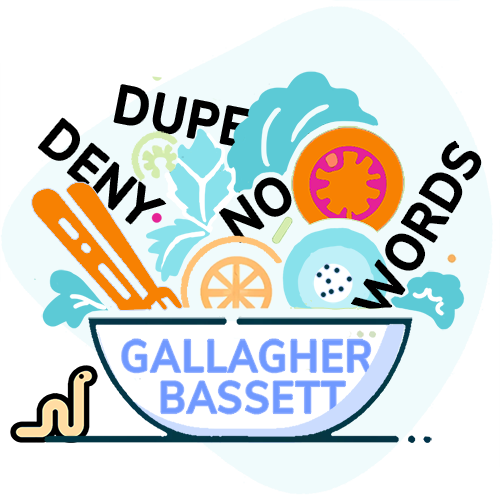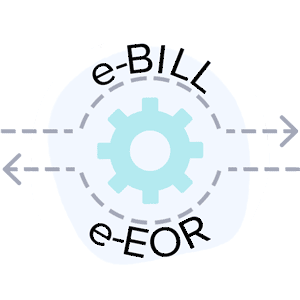CA Payment Denial Rates - Top 20 Claims Administrators

Bill data collected from daisyBill clients during the first four months of 2024 reveal claims administrators’ disturbing propensity to refuse payment for injured workers’ treatment.
The data below reflect the 20 claims administrators to which daisyBill providers sent the highest number of bills this year through April—and reveal each instance in which the claims administrator denied payment for the entire bill (as opposed to denying individual line items).
Across the nearly half million bills shown below, one might expect denial rates within a relatively tight range. However, denial rates varied widely for the 20 claims administrators listed, from as low as 1% to as high as 42% of all bills submitted.
These data reveal which claims administrators may be taking advantage of California’s payer-friendly laws, which essentially incentivize claims administrators to reflexively deny payment for any reason, legitimate or otherwise.
Remember, the only way for a provider to compliantly dispute a valid or noncompliant bill denial is to submit a Second Review appeal. If the provider fails to submit the appeal in a timely or compliant manner, the claims administrator owes the provider exactly $0.
With no shortage of erroneous or otherwise invalid payment denials—and an appeals process in which the rules are strict for providers but seem optional for claims administrators—it’s all too easy for them to game the system.
daisyData: Denial Rates 2024
The table below includes the 20 claims administrators that received the highest number of bills from daisyBill providers from January 2024 through April 2024. For each, the table lists:
- The total number of bills submitted
- The count of bills for which payment was denied in its entirety
- The percentage of bills for which payment was denied
The table is sorted by the percentage of denied bills, from highest to lowest. Collectively, these claims administrators refused to pay 18% of the 493,868 bills submitted by providers.
Shockingly, Next Level Administrators refused to pay almost 42% of providers’ bills.
Not far behind, The Hartford, Travelers, and Insurance Company of the West each refused to pay 30% or more of providers’ bills. Gallagher Bassett and AmTrust followed closely behind with denial rates of 29%.
Ask yourself: Is it really plausible that 1 in 3 (or in Next Level’s case, nearly half) of the bills submitted to these claims administrators were somehow invalid? These data should disturb every employer, provider, and state regulator.
Claims Administrator |
Jan-Apr 2024 Original Bill Count |
Jan-Apr 2024 Bill Payment Denial Count |
Jan-Apr 2024 Bill Payment Denial % |
Next Level Administrators |
6,730 |
2,822 |
42% |
The Hartford |
9,755 |
3,622 |
37% |
Travelers |
16,189 |
5,921 |
37% |
Insurance Company of the West |
17,139 |
5,122 |
30% |
Gallagher Bassett Services Inc. |
44,583 |
12,842 |
29% |
AmTrust North America, Inc. |
19,304 |
5,532 |
29% |
Zurich Insurance North America |
16,767 |
3,508 |
21% |
Berkshire Hathaway Homestate Companies |
10,031 |
1,785 |
18% |
CorVel |
28,822 |
5,012 |
17% |
Liberty Mutual Insurance |
21,628 |
3,567 |
16% |
ESIS, Inc. |
16,828 |
2,642 |
16% |
State Compensation Insurance Fund (CA) |
45,339 |
6,861 |
15% |
Cannon Cochran Management Services, Inc. |
13,797 |
2,066 |
15% |
Sedgwick Claims Management Services, Inc. |
146,936 |
18,920 |
13% |
Intercare Holdings Insurance Services, Inc. |
27,744 |
3,323 |
12% |
Broadspire Services, Inc. |
14,985 |
1,410 |
9% |
Athens Administrators |
13,562 |
793 |
6% |
Keenan & Associates |
9,608 |
560 |
6% |
Tristar Risk Management |
7,317 |
120 |
2% |
Los Angeles County Metropolitan Transit Authority (CA) |
6,804 |
89 |
1% |
Totals |
493,868 |
86,517 |
18% |
Worth noting: unlike the data reported by the WCIRB, the denial rates above are not self-reported; these data were collected directly from the electronic Explanations of Review (e-EORs) sent by the claims administrators.
Every California bill submitted through daisyBill is complete and complies with the Division of Workers’ Compensation (DWC) Billing and Payment Guide. In future articles, we will explore the denial reasons these claims administrators cited for refusing to pay providers’ bills.
Also worth noting: even though Sedgwick has a relatively less problematic 13% denial rate, all readers know that Sedgwick fails to send e-EORs for up to 23% of providers’ bills (with the tacit blessing of the DWC, which inexplicably takes no action to enforce e-EOR regulations). Accordingly, for Sedgwick, the denial rates reported above are potentially even higher than the e-EOR data indicate.
Second Review Appeals Essential
With a collective 18% denial rate, these data reveal that any attempt to effectively manage practice revenue for treating injured workers must include a standard operating procedure for consistently appealing every improper denial or adjustment.
Without a timely, compliant Second Review appeal, payment on a denied bill is forfeit. For providers, best practice is to be prepared to effectively send two bills every time the office sees an injured worker—an original bill and a Second Review appeal.
Not sure how to protect against inappropriate payment denials? Feel free to reach out to daisyBill for help. Chat with our experts using the pink button in the bottom right of this screen, or email us at info@daisybill.com.
Protect your practice. Harness the power of daisyBill software, data, and expertise for faster, better workers’ comp billing. Reach out to learn how we can help.
CONTACT US
DaisyBill provides content as an insightful service to its readers and clients. It does not offer legal advice and cannot guarantee the accuracy or suitability of its content for a particular purpose.

.png)
.gif)



